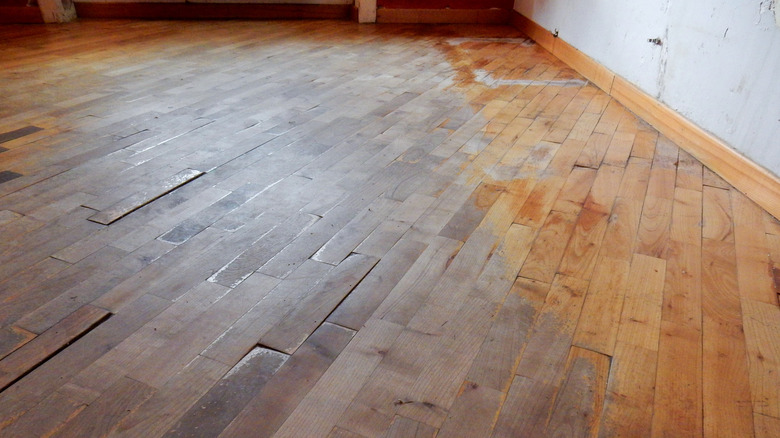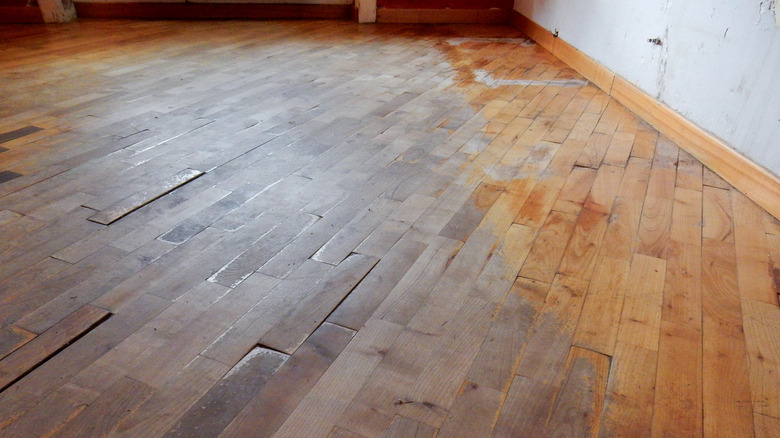Uneven floors can make a room look sloppy and negatively impact the overall aesthetic of your home. Thankfully, there are things you can do to make uneven floors appear flatter and straighter. The right flooring choices and installation techniques can help minimize an uneven floor's appearance. Here are some tips for making uneven floors look straight with flooring.
Assess the Unevenness
First, scrutinize the floor and determine what is causing the unevenness. Is the subfloor uneven? Or are there just low and high spots in the existing floor that needs replacement? Identify whether the issue is minor or major. Slight unevenness of 1/4 inch or less over a 10-foot span can often be remedied with the right flooring choice and prep work. More significant unevenness will likely require correcting the subfloor first before installing new flooring.
Remove Existing Flooring
If you currently have flooring installed, remove it completely so you can see the bare subfloor. This allows you to identify high and low spots, cracks, or areas in need of patching. Be sure to inspect if there is unevenness in the subfloor itself that needs to be remedied before installing new flooring. Leveling out the subfloor provides the best foundation for achieving a straight, even floor.
Fill Low Spots
Use a self-leveling floor leveling compound, thinnest mortar, or patch mix to fill in any dips, cracks, or holes in the subfloor. Fill low spots to be flush with the surrounding areas. Allow proper drying time based on the product specifications. Then sand bumps smooth. Proper fill work helps create a flat base for the new flooring.
Choose Flexible Flooring
Opt for flexible forms of flooring when dealing with slight unevenness in a subfloor. Materials like vinyl plank, luxury vinyl tile (LVT), and laminate flooring all have some flexibility and forgiveness when dealing with minor subfloor imperfections. The planks or tiles can flex and bend slightly to adapt to the unevenness below. Just be sure unevenness is less than 1/4 inch across a 10-foot span which is the maximum tolerance for these floors.
Use Floor Leveler with Adhesive
With sheet materials like vinyl sheet flooring or linoleum, you can create a smoother surface using floor leveler atop the adhesive. Use a notched trowel to apply the adhesive in a thin, even layer. Then sprinkle cement-based floor leveler evenly over the wet adhesive. This helps fill any leftover low spots for a flat surface. Allow to dry completely before placing flooring.
Consider Floating Floors
Floating laminate, LVT, and engineered hardwood all get installed without nails or glue contacting the subfloor. These systems essentially “float” over the unevenness, allowing flexibility and movement. Just ensure unevenness does not exceed height differences of 1/4 inch. The planks or tiles remain connected tightly while concealing the unevenness below. Use flooring with attached underlayment for maximum smoothness.
Use Thicker Flooring Material
For more significant subfloor unevenness, choose a thicker floor material like engineered hardwood. A 3/4-inch-thick hardwood plank is better at spanning low and high spots than a thin vinyl sheet. The thicker material makes slight imperfections less noticeable. This style also gets nailed or glued directly to the subfloor. Ensure proper acclimation of the wood first.
Install Wood Diagonally
With solid hardwood, an angled or diagonal installation pattern can help minimize the appearance of unevenness. The directional planks draw the eye diagonally across the floor instead of directly across any imperfections. Stagger rows randomly for best results. Just take care to properly nail planks to bridge any low spots in the subfloor.
Overall, remedying an uneven subfloor provides the best results for achieving perfectly straight floors. But in cases of minor unevenness, flexible flooring materials combined with proper fill work can help disguise imperfections nicely. With the right prep work and flooring choice, you can make uneven floors look straighter. Just take measurements across the whole room and address any spots exceeding the flooring’s tolerance for unevenness before installing. This saves frustration down the road.
Refresh your home with stylish new carpets thanks to instant £600 financing approval at Pay As You Go Carpets. Repay over time in £10 installments.




